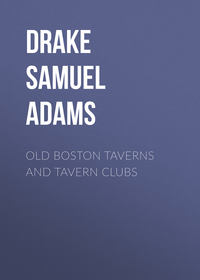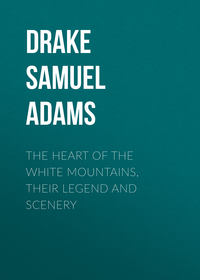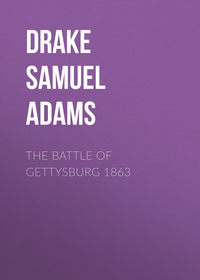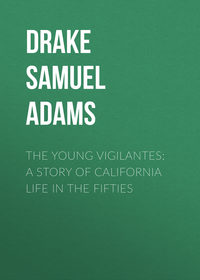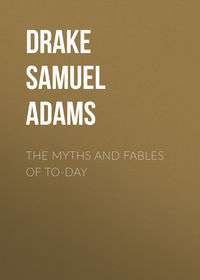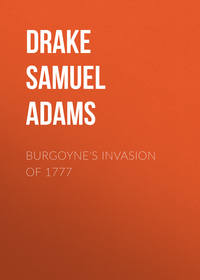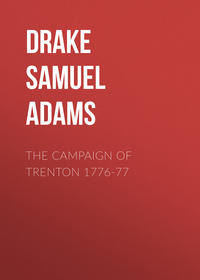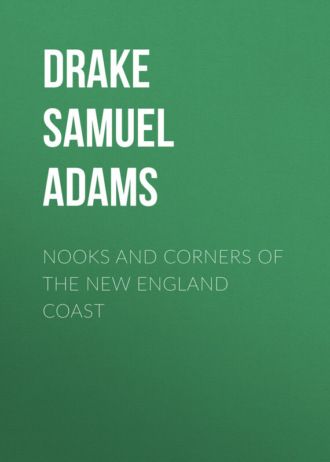 полная версия
полная версияNooks and Corners of the New England Coast
308
In 1834 New London employed thirty-six vessels in whaling and sealing. A few are still engaged in the latter fishery, in the extreme navigable waters of the Arctic and Antarctic seas.
309
During the unexampled cold of the past winter (1874-'75), the light-boat off New London was, in fact, carried away from her moorings by an ice-field, and many others all along the coast were stranded.
310
At the light-houses I have visited in cold weather, the unvarying complaint is made of the poor quality of the oil furnished by the Light-house Board. One keeper told me he was obliged to shovel the congealed lard-oil out of the tank in the oil-room, and carry it into the dwelling, some rods distant, to heat it on his stove; sometimes repeating the operation frequently during the night, in order to keep his light burning.
311
It is shown in the view of New London in 1813, at the head of this chapter.
312
Bishop Seabury was born in 1728, and died in 1796, aged 68. In person he was large, robust, and vigorous; dignified and commanding in appearance, and loved by his parishioners of low estate. After consecration he discharged the functions of bishop of the diocese of Connecticut and Rhode Island.
313
The months of January and February, 1875, will be long remembered in New England for the intense and long-continued cold weather. Long Island Sound was a vast ice-field, which sealed up its harbors. For a time navigation was entirely suspended, the boats usually plying between Newport, Stonington, New London, and New York being obliged to discontinue their voyages. Gardiner's Bay was completely closed. The shore of Long Island, on its ocean side, was strewed with great blocks of ice. An unusual number of disasters signalized the ice embargo throughout the whole extent of the New England coast.
314
In all, the British destroyed one hundred and forty-three buildings, sixty-five of which were dwellings, and including the court-house, jail, and church.
315
In the Wadsworth Museum, Hartford, the vest and shirt worn by Ledyard on the day of his death, are still shown to the visitor. Lafayette, when attacking the British redoubt at Yorktown, ordered his men, it is said with Washington's consent, to "remember New London." The continental soldiers could not or would not execute the command on prisoners who begged their lives on their knees.
316
Soon after the surrender a wagon loaded with wounded Americans was set in motion down the hill. In its descent it struck with great force against a tree, causing the instant death of several of its occupants. – "Gordon's Revolution," vol. iv., p. 179.
317
Captain Mason, with the Connecticut and Massachusetts forces, numbering in all only ninety men, together with about four hundred Narragansets and Mohegans, attacked the Pequot fortress on the morning of May 26th, 1637. His Indian allies skulked in the rear. Mason's onset was a complete surprise; but he would not have succeeded had he not fired the fort, which created a panic among the enemy, and rendered them an easy prey to the English and friendly Indians surrounding it. Between six and seven hundred Pequots perished.
318
The English in these early wars fought in armor, that is to say, a steel cap and corselet, with a back and breast piece, over buff coats, the common equipment everywhere of that day for a horse or foot soldier.
319
Mr. John Quincy Adams accompanied his father to France, and was placed at school near Paris.
320
Miss E. S. Quincy's "Memoir."
321
In 1835, when President Jackson demanded twenty-five millions of France on account of French spoliations, the claim of Beaumarchais was allowed, after deducting a million livres which had been advanced by Vergennes. Deane's heirs did not obtain an adjustment of his claims by Congress until 1842.
322
Ledyard proceeded no farther than Cairo, where he died, in 1788, of a bilious fever.
323
Decatur offered to match the United States and Macedonian with the Endymion and Statira. Sir Thomas declined the proposal as made, but consented to a meeting between the Statira and Macedonian alone.
324
Nelson commended almost with his latest breath Lady Hamilton and his daughter as a legacy to his country. Lady Hamilton, however, died in exile, sickness, and actual want at Calais, France, in 1815.
325
The falls were very beautiful, and have been celebrated by Trumbull's pencil and Mrs. Sigourney's verse. There still remain some curious cavities, worn in the rock by the prolonged rotary motion of loose stones. Lydia Huntley Sigourney, the most celebrated writer in prose or poetry of her day in New England, was a native of Norwich.
326
Before the battle with the Narragansets, Uncas is said to have challenged Miantonimo to single combat, promising for himself and his nation to abide the result. Miantonimo refused. This chief, in his flight from the field, was overtaken by Mohegan warriors, who impeded him until Uncas could come up. When Uncas laid his hand on Miantonimo's shoulder, the latter sat down in token of submission, maintaining a sullen silence. Uncas is said to have eaten a piece of his flesh.
327
The proprietors numbered thirty-five. Uncas received about seventy pounds for nine square miles. The settlement of Norwich is considered to have begun in 1660, when Rev. James Fitch removed from Saybrook to Norwich (town).
328
The following inscriptions are from the royal burial-ground of the Mohegans:
"Here lies ye body of Pompi Uncas, son of Benjamin and Ann Uncas, and of ye royal blood, who died May ye first, 1740, in ye 21st year of his age."
"Here lies Sam Uncas, the 2d and beloved son of his father, John Uncas, who was the grandson of Uncas, grand sachem of Mohegan, the darling of his mother, being daughter of said Uncas, grand sachem. He died July 31st, 1741, in the 28th year of his age."
"In memory of Elizabeth Joquib, the daughter of Mahomet, great-grandchild to ye first Uncas, great sachem of Mohegan, who died July ye 5th, 1750, aged 33 years."
329
The hereditary chieftainship was extinct as long ago as the beginning of the century. The Mohegans occupied a strip of land containing two thousand seven hundred acres, lying on the Thames between Norwich and New London, above the mouth of Stony Brook, and between the river and Montville. In 1633 the Indian population of Connecticut was computed at eight persons to the square mile; the earliest enumeration of the Mohegans made their number one thousand six hundred and sixty-three souls; in 1797 only four hundred remained. By 1825 the nation was reduced to a score or two, a portion having emigrated to Stockbridge, Massachusetts. The Mohegan reserve was divided in 1790 among the remaining families of the nation. The Mohegans were probably a distinct nation, though Uncas was a vassal of the Pequots.
330
On the Colchester road, or Town Street, near the junction of a street leading toward the Falls. The estate is now locally known as the Ripley Place.
331
The general was appointed collector of New London by Washington. His first wife was a daughter of Governor Trumbull.
332
The term "Brother Jonathan" originated with Washington, who applied it to Governor Jonathan Trumbull, of Connecticut. When any important matter was in agitation the general would say, "We must consult Brother Jonathan."
333
General William Hart, an old soldier of the Revolution, was a wealthy and highly esteemed citizen of Saybrook. In 1795, with Oliver Phelps and others, he purchased the tract in Ohio called the Western Reserve. The Commodores Hull, uncle and nephew, married sisters belonging to this family. Commodore Andrew Hull Foote was also a nephew of Commodore Isaac Hull, whose widow was still living when I visited Saybrook in 1874.
334
The eminence on which the fort stood, also called Tomb Hill, jutted into the river, being united to the shore by a beach, and bordered by salt-marshes. It was steep and unassailable from any near vantage-ground. In 1647 the first fort was accidentally destroyed by fire.
335
In the British State Paper Office is a translation of part of a letter, dated at Fort Amsterdam, in 1633, from Gualtier Twilley to the governor of Massachusetts Bay, concerning the right of the Dutch to the river. The governor says that he has taken possession of it in the name of the States General, and set up a house on the north side, with intent to plant. He desires Winthrop will defer his claims until their superior magistrates are agreed. The word "[Hudson?]" is placed after "river" in the calendars, but the date and other given facts are probably allusions to the Connecticut attempt.
336
Lieutenant Gibbons, Sergeant Willard, and some carpenters. – "Lion Gardiner's Account."
337
See the correspondence in Hutchinson's "History of Massachusetts," appendix, vol. i., between John Cotton and Lord Say.
338
There is nothing improbable in the story, either from the rank or political importance of the personages mentioned; the civil commotions in England rather give it a groundwork of probability. The authorities in support of the emigration are Dr. George Bates, the physician of Cromwell, in his "Elenchus Maluum Nuperorum in Anglia," William Lilly's "Life and Times" (London, 1822), Sir William Dugdale's "Troubles in England," Mather's "Magnalia," Oldmixon's "British Empire in America," Neal's "History of New England," and Hutchinson's "History of Massachusetts." Hume, Chalmers, Grahame, Hallam, Russell, Macaulay, and others repeat the story with various modifications; Aiken, Forster, Bancroft, Young, and others deny or doubt it. The arguments pro and con may be consulted in the "New England Historical and Genealogical Register for 1866."
339
Lechford, in his "Plain Dealing," says, "There are five or six townes and Churches upon the River Connecticut where are worthy master Hooker, master Warham, master Hewet, and divers others, and master Fenwike, with the Lady Boteler, at the river's mouth in a faire house, and well fortified, and one master Higgison, a young man, their chaplain. These Plantations have a Patent; the Lady was lately admitted of Master Hooker's Church, and thereupon her child was baptized."
340
Fenwick "played upon him" a little "with the great guns," which did gar him gang down more fool than he went up. – Carlyle. Hutchinson places his death in 1657. There was a Lieutenant-colonel Fenwick killed in one of the battles between Condé and Turenne, in Flanders, in 1658. The action occurred before Dunkirk. Fenwick's last request of Lockhart, the English commander, was to be buried in Dunkirk. – Thurloe, vol. i., p. 156.
341
Lion Gardiner became the owner of the fertile island bearing his name at the east end of Long Island. It is seven miles long and a mile broad, with excellent soil. Some time ago its peculiar beauty and salubrity caused it to be called the Isle of Wight. The island, I believe, still remains in the possession of the Gardiner family. For many years it descended regularly from father to son by entail. The Indian name was Munshongonuc, or "the place of Indian graves."
342
One sister married Commodore Hull, as related; another married Hon. Heman Allen, minister to Chili; and a third, Rev. Dr. Jarvis, of St. Paul's, Boston.


